Every day I arrive at Paddington, and every day I alight from my HST before making a mad dash for the Hammersmith and City Line platforms.
Invariably, I miss the next service and look back across the station. Usually I’m lucky enough to see what the enthusiast in me thinks of as a ‘proper train’ - Great Western Railway’s ‘Night Riviera’, fresh up from Cornwall, its slumbering passengers now gone, the Class 57 at its country end preparing to drag the empty stock back to Old Oak Common.
Often I feel envious - I’ll have not long left my bed, so the thought of getting into another one has great appeal at this point. The spell breaks, of course - and I forget about the Sleeper as I’m jostled and breathed over in the mad crush of the Tube.
There is something more final about the end of a Sleeper train journey - the waking from slumber, the gathering of belongings, the downcast detraining. Appropriate then, perhaps, that British Rail’s last passenger working was one such service.
Born in 1948, when the first Great Western, LMS, LNER and Southern Regions were nationalised, BR bowed out for good in 1997. Sleeper trains go back much further, of course, to the 19th century - the first genuine sleeping car was introduced by the North British Railway in 1873 for runs between Glasgow and King’s Cross. This, and other early vehicles such as the first Pullman Sleepers imported from America, had communal sleeping and longitudinal berths, but by 1890 GWR had introduced the now-familiar ‘corridor and compartment’ configuration, which went on to be adopted by a number of companies.
The Sleepers survived the Grouping and saw in nationalisation, although the designs of Gresley, Stanier and Hawksworth (et al) were soon to be replaced by British Railways’ steel-bodied Mk 1 vehicles, which came in from 1957 and would go on to give over 20 years’ service. They proved popular with passengers, although their poor fire resistance was underscored all too clearly on July 6 1978, when linen bags placed against an unprotected electric heater caught fire near Taunton, resulting in the deaths of 12 people (RAIL 729).
At this time, BR was carrying some 800,000 Sleeper passengers a year. Although the official investigation recommended improvements to maintenance and operational procedures, most of the issues raised by the accident would actually be addressed by new Mk 3 vehicles, which were authorised in 1979 and which would feature better signage, refined fire alarm systems and smoke detectors. They were also air-conditioned, cleaner, airier and ‘better in every respect’ than their forebears.
Peter Kelly, writing for RAIL in July 1984 (at the time it was Rail Enthusiast), understood this. He knew that the Mk 1s were “were noisy, claustrophobic, sometimes faintly smelly”, but as he took the final Mk 1 Sleeper service (the 2340 from Inverness on May 14 1984), he knew that they were also “homely in a certain kind of way”.
Kelly’s fine account recalls how the Mk 1 ranks declined rapidly from 1978, although the truth was that the traffic was starting to ebb. They were part of the old railway, and as the world was changing, so too were passengers’ needs and expectations. Passenger numbers for the Sleeper market were falling away more markedly than for their daytime counterparts, which meant that by the time the Mk 3s were being delivered, their days were already numbered in many respects.
Back in the 1970s, it had been possible to (try to) snooze as you sped from Swansea to Paddington, Barrow to Euston or Aberdeen to King’s Cross. Almost 30 trains were timetabled to take you to almost every corner of the country in jostled comfort.
By the mid-1980s, there were just 13. And changes to shipping and increases in low-cost domestic flights from a number of regional airports would soon result in the end of the Holyhead and Stranraer services, while trains to and from ‘the Cross’ would be withdrawn in 1988 in a bid to cut the ‘competition’ between the East and West Coast routes.
As privatisation approached, there would essentially be just two in operation: the ‘Night Riviera’ between Paddington, the West Country and Cornwall; and the ‘Caledonian’ between Euston and Scotland.
It would be the latter that took centre stage on the last night of BR’s passenger operations in 1997, although when the time came there would be some confusion as to which train the Last Train would actually be.
Not that there was any confusion about the operator itself - ScotRail was BR’s last passenger sector, marking the end of what had initially seemed a slow process, Invitations to Tender’ for the first three franchises (South West Trains, Great Western and London Tilbury & Southend) having been issued back in May 1995.
By the end of March 1997, all the deals had been sealed and contracts had been signed… bar one. The media reported how “customers” and “excited enthusiasts” tried to work out which train could justifiably be considered the final one.
Some claimed perplexity was being promoted by “the bane of every traveller” - namely “BR’s infamous timetables”. More likely, it was just a question of logistics: which would leave first, or arrive last.
Some people didn’t bother to work it out, opting instead for a pair of free ScotRail expresses worked by Class 158s - one from Edinburgh to Glasgow, the other from Glasgow to Edinburgh. On March 31, both departed as BR trains at 2330. They would arrive as National Express ones at 0040 the following morning, their passengers clutching souvenir tickets commemorating the fact, some slightly sozzled on the free whisky that had flowed on board.
Just before midnight, the last BR departure (the Up Sleeper) left Edinburgh Waverley for London Euston, waved off by BR Chairman and Chief Executive John Welsby. He then handed signed papers to National Express Chief Executive Paul White, formally relinquishing control of ScotRail and closing BR’s passenger business.
Welsby told the press that the company had “achieved a great deal over the years, and millions of current and former railway staff have much to be proud of”. In particular, he added: “They have a culture of continuous improvement in safety of operation in which the travelling public has great confidence.”
Railway staff had also seen a lot of change, with one man perhaps seeing more than most: 64-year-old John Bowden, the only rail employee to have started his working life before nationalisation, had joined the London and North Eastern Railway as a store boy in 1947, going on to work as a wagon examiner before ending his ‘BR career’ selling tickets at Blairhill, a station eight and a half miles out of Glasgow Queen Street.
“It didn’t make much difference when British Rail was nationalised,” he said as he received a plaque marking his achievement from ScotRail Managing Director John Ellis.
“I only hope privatisation won’t make much difference either. The biggest change since 1948 has been in the stations, which used to be filthy because of the steam trains. British Rail has been teased a lot over the years, but if you ask me it has been a pretty good service which people have appreciated.”
Reporting for The Independent, Michael Williams (author of The Trains Now Departed) noted the confusion among staff as to whether the Sleeper “would change its identity from publicly to privately-owned … on the stroke of midnight or on arrival in Euston”.
Either way, it was clear that “there was little nostalgia among the 60 Standard and 35 First Class passengers aboard the 2355”. No anoraks, vacuum flasks, ABCs or ‘combis’ here. Most, as Williams noted, were “Edinburgh business people heading for work in London or tourists returning from the Easter weekend”.
And no one seemed to be bothered about the change in ownership. Indeed, many welcomed it, hoping for better service, better coffee, better sandwiches. The solitary note of regret came from Peter Simpson, Duty Manager at Waverley: “Wherever you went up and down the country, you were part of the railway family. Now, with privatisation, all that is gone.”
Through the night, through the Scottish and English countryside, the eight-coach train sped behind 87021 Robert the Bruce. A diversion through Birmingham meant the train was 22 minutes late arriving at Euston, but as the ‘87’ approached the stops there was one last vestige of the old BR left.
The Up might have been the last departure, but the Down Sleeper - the 2130 - was destined to be the last arrival. Waiting for the driver meant it had left Euston 24 minutes late. The Times called it “a fitting end to 50 years of jokes about tardiness”, and quoted an alleged enthusiast who said: “You’d have thought they’d have got their act together tonight.”
On board, many were unaware of the imminent change… and few cared when they found out. Yet they were involved in a small part of history - when the train pulled in to Fort William behind its thrumming Class 37 at around 1045 on April 1, it was all over for BR.
Well, almost! Welsby had one train operation left - Railfreight Distribution, which would enter the private sector that November, after the European Union had ratified its sale to EWS. His stewardship of non-operational railway land, the British Transport Police, the Railway Heritage Committee and a few other administrative tasks would continue a while longer.
For its part, The Times did point out the success of Inter-City and the HSTs, but also welcomed the new regulator “to step in where services are cancelled, fares structures labyrinthine, and through ticketing available to only the brave”. But the going wasn’t going to be easy in the new world - just as it hadn’t been in the old.
Thankfully, it wasn’t the end for the ‘Caledonian Sleeper’, which Serco now operates and which still goes to Aberdeen, Edinburgh, Glasgow, Inverness and Fort William. The ‘37s’ may have gone, but traction lovers can still thrill to the occasional roar of an ‘87’ under the wires, and still marvel at their reliability after 40-or-so years.
Traditionalists can also marvel that BR’s service pattern remains largely intact, such was the strength of its plan. They may lament the passing of the Mk 2 and Mk 3 stock next year, when Serco introduces its new Mk 5 fleet, but as these will feature en suite berths, we can rest assured that what novelist Andrew Martin described as “one of the last remaining outposts of British railway charisma” will be with us for many years to come.
This feature was published in RAIL 823 on 25th March 2017

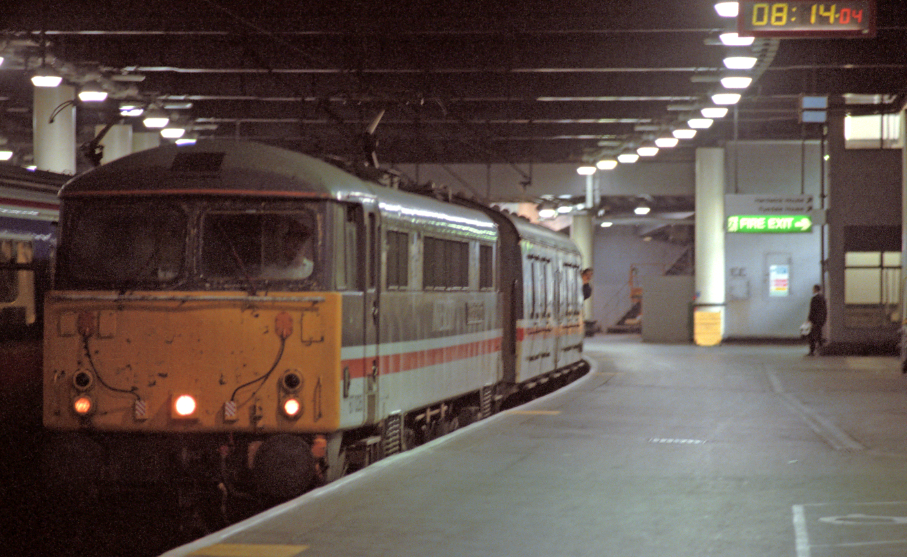
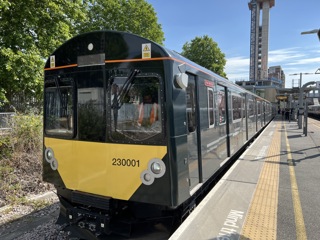
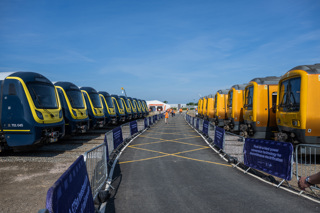
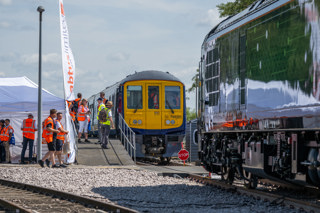
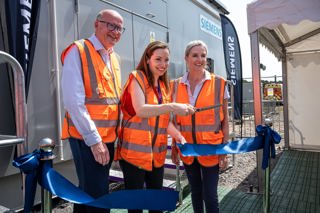
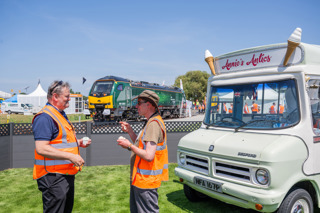











FrankH - 13/06/2017 22:39
Used to read Peter Kellys articles in Rail Enthusiast, also a certain Nigel Harris used to contribute/edit. Both enjoyable reads with a twist of wit if I remember correctly.